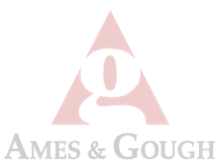THE ZWEIG LETTER FEBURARY 14, 2022, ISSUE 1428
Managing Employment Related Exposures
Many design firms that adjusted their workplace to address COVID-19 face heightened exposures to employment-related litigation and related negative consequences.
By: Robert Hughes, Senior Vice President and Partner, Ames Gough
As design firms of all sizes emerge from the prolonged impact of the COVID-19 pandemic, they shouldn’t overlook potential exposures to employment practices related litigation. These actions typically exceed $250,000 in judgment costs and attorney’s fees. Furthermore, even when employers prevail, they face significant defense costs and the potential for lasting impacts on employee morale, productivity, and reputational damage.
The number of employment-related lawsuits remains high. In 2020, as payrolls dwindled due to COVID-19, the EEOC still received more than 67,000 employment-related complaints, including a record 56 percent alleging retaliation. Many employers, including design firms, were forced to downsize during COVID-19 and those layoffs are often recharacterized as age- or gender-biased discrimination claims. It is safe to assume that concerns about claims relating to back-to-work and vaccination mandates/mask-wearing protocols together with remote work and similar policies will continue well into 2022.
Sound risk management practices reduce the likelihood of claims and establish a firm’s defense in any related litigation. In addition, they help firms obtain better terms and conditions in the purchase of employment practices liability insurance. Here are some key elements of an employment practices risk management program:
- Create/update an employment manual. This is the firm’s first line of defense and should articulate clear and consistent policies and procedures, including any process for reporting situations involving discrimination or harassment. If your firm already has a manual, when was the last time it was updated? Manuals should be updated to take into account COVID/post-COVID changes in business practice.
- Review the employment manual with all current and new employees. Require employees to sign a written acknowledgement letter that they have read the manual and agree to follow the firm’s policies and procedures. Signed acknowledgements should also be secured when you’ve released a substantively updated version of the manual.
- Hold occasional meetings with employees regarding the employment manual. Use the meetings to review changes to your employment manual and reinforce the policies and incident reporting procedures. The ability to host these meetings online makes them easy to schedule and conduct on a regular basis.
- Provide training for all managers/supervisors involved in the hiring process. Make sure they understand the dos and don’ts of the interview process.
- Have an employment attorney review all recruitment advertisements, employment applications, job tests, employment contracts, and employee manual/acknowledgement letters. The attorney should make sure they comply with federal and state employment laws in your jurisdiction.
- Establish a written policy of “zero tolerance” against sexual harassment and discrimination of all types – race, sex, age, national origin, religion, disability, etc. Communicate the policy to all employees and make sure your employment manual includes behavioral guidelines, reporting procedures, and disciplinary actions, up to and including termination.
- Prominently publish and display the firm’s equal opportunity employment policies.
- Establish confidential internal complaint procedures and communicate them to all employees. Typically, such complaints should be submitted to a higher-level manager or HR professional, rather than a direct supervisor (who might be the source of the problem).
- Thoroughly investigate any charge of discrimination or sexual harassment. Not doing so can have significant consequences to a firm, such as an accused employee suing for defamation or the complainant bringing suit for failure to properly evaluate the complaint.
- Carefully check classification of employees. All employees should be properly classified as either exempt or nonexempt to avoid wage and hour claims. Be aware that salaried employees or employees with professional degrees (such as engineers) are not automatically “exempt” from overtime pay requirements under the Fair Labor Standards Act. While the FLSA contains specific exemptions from overtime pay requirements for executives, administrative, and professional employees, design firms should understand whether and how the exemptions apply to their employees.
In addition, as a vital element of their risk management, AEC firms should consider purchasing employment practices liability insurance, which can protect firms from the financial consequences of employment-related lawsuits. Many EPLI/management liability insurers offer their policyholder firms training content that can be readily tailored to your firm and presented online.
EPLI can be purchased as a stand-alone policy, combined with other management liability coverages (e.g., directors and officers and/or fiduciary liability), or provided as a sublimit under a business owners policy or an AEC professional liability policy, depending on the size of the firm and the insurer providing the coverage. AEC firms should work with their insurance broker or advisor to identify the program that best meets their needs and to help determine appropriate coverage limits.
Employers with educated and highly paid staff, such as AEC firms, tend to pay more for EPLI coverage as these employees are more likely to engage in litigation and potential damages tend to be higher. Underwriters also pay close attention to claims history, staff turnover, and a firm’s employment-related risk management measures, as described earlier.
As design firms have adjusted their workplace practices to address challenges posed by COVID-19, many now face heightened exposures to employment-related litigation and related negative consequences. Fortunately, by adopting and maintaining sound risk management and purchasing appropriate EPLI coverage, AEC firms can reduce the likelihood of employment-related claims and limit their exposures from such losses.
THE ZWEIG LETTER SEPTEMBER 14, 2022, ISSUE 1428
@Copyright 2022
All Rights reserved
